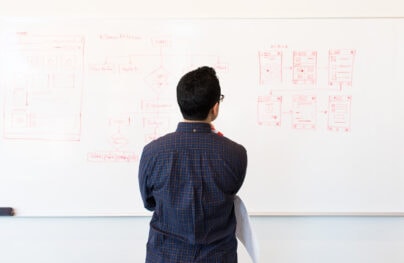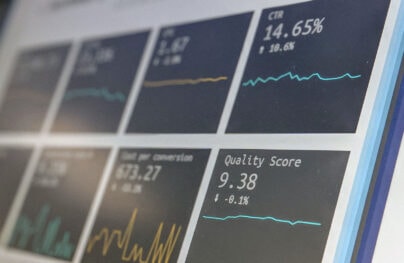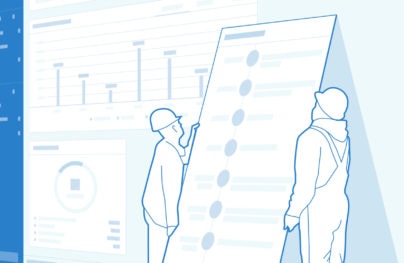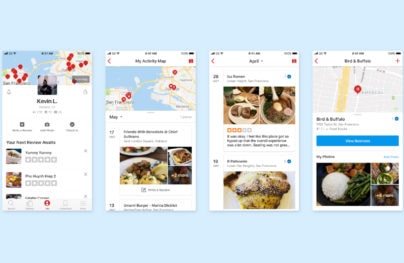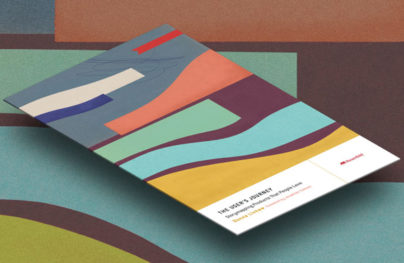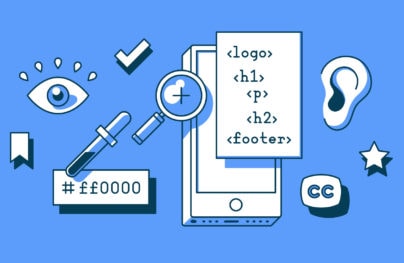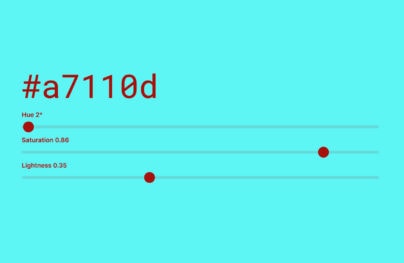Emotion-Powered UX: Could Using Human Faces In Your Design Boost Engagement?
UX design is the artistic process of communicating with users. Like all forms of creative communication, UX design becomes more impactful when you can make it as heartfelt and emotional as possible.
Finding new ways to conjure emotion with website design is a brilliant way to drive positive user experiences and take your design to the next level.
This is where emotion-powered UX design comes in.
One tried and tested way of evoking human emotion is to physically show it. Adding people into your UX design is the number one way to create a connection with your consumers.
But how true is this really? Is emotion-powered UX a real thing? Can using human faces in your design really boost engagement? Let’s find out.
What Is Emotion-Powered UX?
Emotion-powered UX can be described as the process of curating designs that evoke viewer emotions. It’s more about how the user feels about the design and less about what they think about it.
With Postcards Email Builder you can create and edit email templates online without any coding skills! Includes more than 100 components to help you create custom emails templates faster than ever before.
Free Email BuilderFree Email TemplatesMany designers tend to focus on user needs as the basis of their interactions with a product. Based on this assumption, creating a design that works and is practical will deliver a positive experience for the user. While this is valid to some extent, research and experience have shown that appealing to the user’s emotions tends to drive even better results than appealing to logic.
That’s because user responses are fundamentally emotion-driven. While most people like to think of themselves as rational, the truth is that emotions form the core of how most humans interpret reality.
More than just focusing on functional usability, this approach to UX design focuses on creating meaningful connections and making designs as memorable as possible. It triggers three core aspects of human emotions;
- The visceral is the user’s first impression of the design
- The behavioral aspect is their subconscious evaluation of how the design will help achieve their goals.
- The reflective is how they’ll consciously judge the design after their interaction with it.

Image Source: Interaction Design
By understanding these aspects of human emotions and leveraging them in their designs, UX designers can craft experiences that resonate deeply with the users and drive engagement and satisfaction.
According to experts at Hostinger, emotional design ranks as one of the top web design trends in 2024.
Evoking emotion within your design, however, is the tricky part. With this in mind, let’s take a look at a few emotion-invoking strategies.
Can Using Human Faces in Design Boost Engagement?
Consider a fashion-focused website that has actual models with facial expressions conveying different emotions to match the style of the products they’re wearing. For instance, a model wearing a formal suit with a confident and sophisticated expression or a model in a cozy sweater with a relaxed and happy expression.
With Startup App and Slides App you can build unlimited websites using the online website editor which includes ready-made designed and coded elements, templates and themes.
Try Startup App Try Slides AppOther ProductsNow imagine the same website with a clean, uncluttered interface with nothing but product images, pricing and descriptions without any human elements or emotional cues. Which of these sites would you rather shop on?
Even if both websites present the same information to users, an emotion-driven UX design that uses human faces actively, like the former, is more likely to create an emotional connection with the users.
Take this great example from Always. The female period brand aims to empower women and make them feel invincible during their periods.
Their choice of showing young girls looking powerful and determined simply encapsulates their brand message and forces you to connect.

Image Source: Always
There are several more examples like this, like a non-profit using images of people affected by a tragedy to evoke feelings of empathy or a travel company using joyful faces to inspire a sense of adventure.

Image Source: Save The Children
The fact is that faces are attention-grabbing. When you use genuine, relatable photos of shiny, happy people in your design, you are likely to draw visitors to your content and get them to pay attention. It’s the reason why websites with friendly, welcoming faces on their landing pages often tend to have lower bounce rates compared to abstract ones with just texts and buttons.
Similarly, e-commerce sites that make use of actual human photos to showcase products are likely to get higher click-through rates and conversions than those that do not. People are also more likely to spend more time on a site if it makes them see faces that make them feel relaxed and happy. There are three engagement metrics (time spent on site, click-through rates, and lower bounce rate) that you get by simply conveying emotions with human faces instead of keeping the site plain and simple.
Human faces can also ramp up the emotional impact of a design. People subconsciously mirror the motions of others, which is why psychologists say emotions are contagious. Seeing a smiling face can make a person feel happier. Similarly, a concerned face can ramp up feelings of empathy. By using faces in your designs, you can evoke the feeling you want to elicit in your user more than words can communicate.
Advantages of Emotion-powered UX

Image Source: Getuplift
How people feel about your design can have a significant impact on their overall experience in several ways. The following are some of the benefits of incorporating emotion-powered UX principles in your designs:
Build Trust & Create a Connection
Appealing to the emotional side of human judgment is the fastest way to create a long-lasting connection with users. To drive brand loyalty, you don’t just want users to like your product’s design out of necessity, you want them to be passionate about it. Emotion-powered UX designs can help you create such deep emotional bonds with users, improve cash flow, and increase sales.
Memorability
Emotions help people form memories. If you can manage to make a user’s experience using a product an emotional one, they’re more likely to remember it than a neutral experience. A strong positive emotional response makes it more likely for users to recall your product and return to it.
Consolidate and Differentiate Your Brand Identity
In such a crowded market, your emotion-powered UX might be just the ticket to help your product’s design stand out. When you leverage human faces in your design, you can help add some more personality to your brand, which is often more than what you can achieve with simple text, colors, and abstract shapes alone.
Imagine creating and raising a brand that strives to convey its brand value as a community-driven product. Sharing consistent photos of your staff and customers in a happy and friendly mood will send you towards your goal more successfully than flowery words or promises will.
For example, a tech startup that showcases photos of the hard-working team behind the finished product will communicate a sense of creativity far better than a business promotion that only uses abstract designs or product images to define its brand identity.
Emotion-Powered Subjectivity
It’s no secret that emotions can be rather subjective. In fact, two people can have totally opposite reactions to a similar image, which can not only make it quite challenging for designers to craft a design that will resonate with everyone but also make it even harder to decide on a leading emotion.
There’s also the big risk of content misunderstandings and the communication of unintended meanings, especially when products are meant to cut across multiple cultures/religions and appeal to a range of different groups.
Inauthentic Marketing
When relying heavily on emotional triggers to formulate the narrative of your content, you run the risk of making user experiences feel artificial or inauthentic.
Customers could feel manipulated when you aim to oversell them on emotions instead of creating advertisements that stick to logic.
The key to avoiding this is to use genuine, relatable imagery as a pose to trying to stage an emotional reaction.
Ongoing Design Complexities
Incorporating human faces into designs is no easy task and often adds a layer of complexity that can be tricky for many designers to work with. Emotion-powered-UX design requires design expertise and heaps more time than traditional abstract designs.
Extra efforts have to be dedicated to ensuring consistency in the style, quality, and type of images used. You may also have to spend more time evaluating the emotional impact of your designs than you normally would.
If you’re going to combat this, using a set of pre-made templates for your email UX design and website UX design could make it much easier to craft a human-facing result with less of the initial hassle.
Is Emotion-Powered UX Worth a Try?
Emotion-powered designs offer numerous benefits to UX designers if you know how to leverage them effectively.
In fact, it is one of the most effective neuro-design tricks you can utilise to drive deeper engagement in your designs.
This said, executing an emotion-charge strategy doesn’t come without some hefty challenges. At the very least, you’ll need to have a much deeper understanding of your audience’s persona and the vast set of emotional triggers they are likely to respond to if you want to create truly impactful, emotion-powered UX designs.
